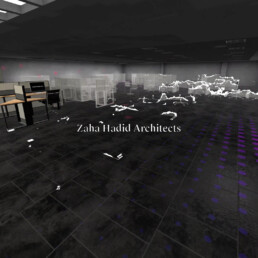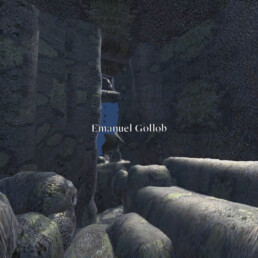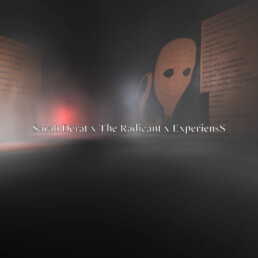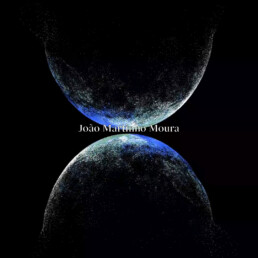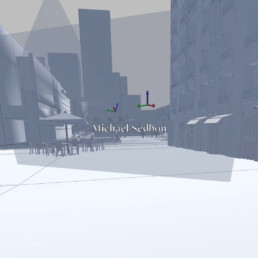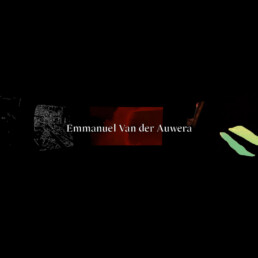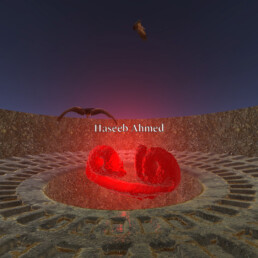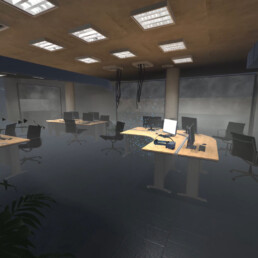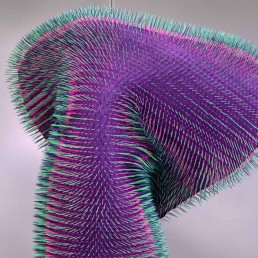SYNX 2021 - MindSpaces
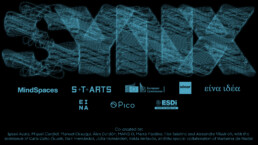
SYNX
A project by Eina Idea in collaboration with MindSpaces and Sónar CCCB
Location: CCCB / Online
Dates: 28, 29 and 30 October, 2021
Eina Idea in collaboration with MindSpaces took part in the festivals AI and Music and Sónar+D CCCB in Barcelona with a twofold project named SYNX, consisting of a VR exhibition and a symposium. The project, as a whole, looks at contemporary urban life as an unresolved choreography of sense and movement data, emphasizing the challenges of organizing collective response and individual action based on algorithmic principles. Social rhythms—kinetic, visual, aural, emotional—and accidents related to their programmability become the point of departure for a reflection on urban complexity in our immediate future. The SYNX exhibition features art, architecture, and interactive storytelling in a game-like experience.
The show presents the current research of six contemporary artists as part of the MindSpaces residency program, an initiative of S+T+ARTS and the European Commission. SYNX includes digital works by Haseeb Ahmed, Emmanuel Van der Auwera, Sarah Derat x The Radicant x ExperiensS, Emanuel Gollob, Joao Martino Moura, Michael Sedbon, with the special collaboration of Zaha Hadid Architects. The artworks and speculative designs to be presented within a VR environment have been co-designed by a Barcelona-based team of designers under the direction of Eina Idea. Students and professors from EINA University Center of Design and Art and ESDi School of Design have also collaborated in the project. At CCCB on October 28-30, 2021, full access to this experience will be offered in VR thanks to the partnership of Pico Interactive. Meanwhile, an embedded, online version of SYNX is available to visitor-players worldwide through the Sónar+D and AI and Music websites, alongside MindSpaces and Eina Idea communication channels.
Blending test models of private homes, offices, streets, crowd control, archaeological sites, and even virtual gallery spaces, artworks in the exhibition address the power of current technologies focused on obtaining experiential data from contemporary urban dwellers—users and performers of the everyday life amidst a web of connected devices. The goal of technologies explored in SYNX, and developed throughout the S+T+ARTS MindSpaces project, is the observation of interactions between built environments and their occupants, aiming at an increase in space adaptability and responsiveness. As a game-like architecture, SYNX presents these questions in a fictional setting where sensing technologies have become autonomous and operate capriciously, challenging the stability and reliability of their own data. In the haunted scenery of SYNX, a legend about technology becomes the narrative for the exhibition visit as an exercise in dystopian archaeology.
SYNX has been co-designed by Ignasi Ayats, Miquel Cardiel, Manuel Cirauqui, Alex Cordon, MANS O, Marta Pardina, Flor Salatino, and Alexandre Viladrich, with the assistance of Clara Cubo-Gasch, Dani Hernández Palomeque, Júlia Hernández González, Iraida Serlavós, and the special collaboration of Marianna de Nadal.
The virtual exhibition was accompanied by a symposium streamed live on October 29th, in which the exhibition artists and designers shared ideas with leading voices in science, urban planning, artistic research, and design fiction to discuss the topics of SYNX. Guest participants in the symposium include Elena Bartomeu, novelist and speculative design professor at EINA; Lluís Nacenta, musician, theorist, and director of HANGAR; Artur Garcia, head of quantum computing at the Barcelona Supercomputing Center; and Mel Slater, neuroscientist and virtual environments expert at the University of Barcelona. The event was conducted and moderated by Béatrice de Gelder, head of the Neuroscience Laboratory at Univerity of Maastricht, and Manuel Cirauqui, director of Eina Idea, and will include a virtual tour of the exhibition. The SYNX Talk Show was presented at the auditorium of CCCB in Barcelona and as an online broadcast via Sónar’s website.
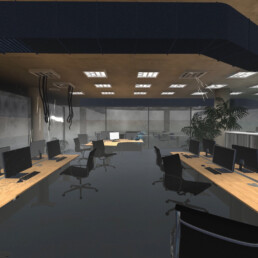
Download Links
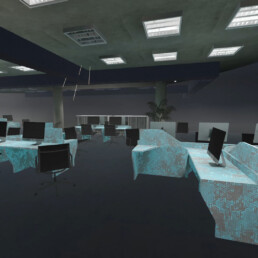




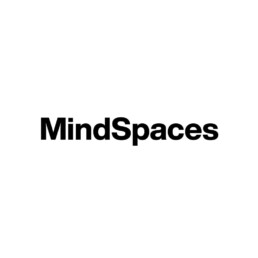
Emmanuel Van der Auwera
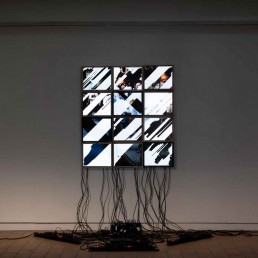
Emmanuel Van der Auwera
Brussels, Belgium
Emmanuel Van der Auwera (b. 1982, Belgium) lives and works in Brussels, Belgium. Through filmmaking, video sculpture, theatre, printmaking, and other media, Van der Auwera sets up encounters with found images that provoke a questioning of our visual literacy: How do images of contemporary mass media operate on various publics and to what end? With the formal rigor of a logician, the artist dissects how images are engineered, mastering specialized industry techniques and intervening on their protocol. In so doing, Van der Auwera brings us no closer to a monolithic truth, but constructs new paradigms for reading images and understanding our relationships with them. Van der Auwera is a 2015 Laureate of the Higher Institute for Fine Arts (HISK) post-academic course in Ghent, a 2015 Langui Award recipient of the Young Belgian Art Prize, and the first winner of the Goldwasserschenking awarded by WIELS and the Belgian Royal Museums of Fine Art. His work has recently been featured in exhibitions at WIELS (Brussels, BE), Centre Pompidou (Paris, FR), Palais de Tokyo (Paris, FR), Centro per l’Arte Contemporanea Luigi Pecci (Prato, IT), Ars Electronica (Linz, AT), Casino Luxembourg – Forum d’art Contemporain (Luxembourg City, LU), Mu.ZEE (Ostend, BE), Botanique (Brussels, BE), among others. His work has been acquired by the Dallas Museum of Art (Dallas, TX, US), KANAL – Centre Pompidou (Brussels, BE), Mu.ZEE (Ostend, BE), Fundación Otazu (Pamplona, ES), Collection de la Province de Hainaut – BPS22 (Charleroi, BE), the National Bank of Belgium – IACCCA (Brussels, BE), and the Jordan Schnitzer Museum of Art (Eugene, OR, US).
MindSpaces project
Michael Sedbon
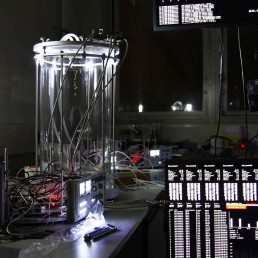
Michael Sedbon
Europe, Asia
Michael Sedbon is an Interaction Designer and artist working in Europe and Asia.
His work explores digital networked technologies and systems through their convergence with non-human intelligence (plants, unicellular organisms, insects, bacterias etc…) in regards to the Infocene problematics, seen as, our current cultural era where Information is the force having the biggest impact on human societies and environments.
He holds a Master in Interaction Design from the London College of Communication.
His actualize artist CV can be found here
MindSpaces project
In regards to the anthropogenic problematics and its relationship to architecture, The work I am carrying as part of the Mindspace initiative focuses on applying agent-based simulation principles to non-human agents. By doing so, I propose two applications of these technologies.
First of all, the project highlights the need to consider the importance of using wildlife and ecosystem simulation in the process of large scale architectural planning and designs to allow for structures to blend with natural systems in seamless ways.
But also, it bridges the fields of non-human manufacturing with algorithmic design: by simulating insect behavior, it is possible to make use of a design framework allowing iteration on artifacts embedding interactive cues (such as attractants and repellents) for non-human agents.
The general goal of such a process is to consider materials designed with the purpose to be activated by interactions with non-human life forms (bacterias, plants, insects, etc…)
The project itself is a use case of this design scenario where a particular species of ant is performing programmable architectural assemblage of artificial leaves which structure had been optimised through a custom made design software.
It is therefore composed of 3 parts:
Design of the Artificial Leaf:
I aim to create an automated prototyping virtual world in which weaver ants will be simulated. The result of this simulation will be sent to a parametric CAD environment (McNeel’s Grasshopper) informing a new iteration of the design.
Manufacturing of the Leaf
Research regarding manufacturing of artificial leaves are currently being conducted.
A manufacturing robot is planned to be automating the process
Ants biology and manipulation
An experimental setup is being built to host the population of ants and to allow fast iteration process.
Michael Sedbon Works
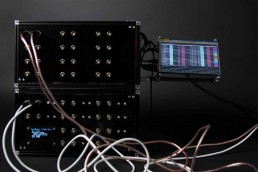
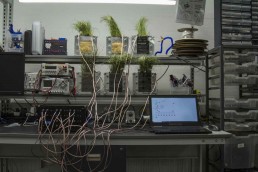
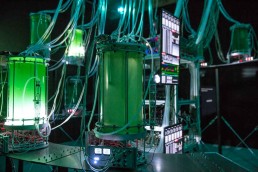
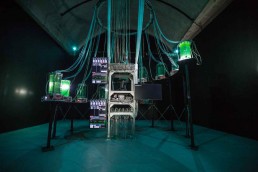
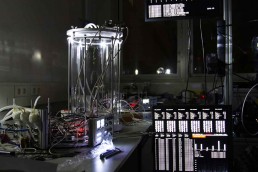
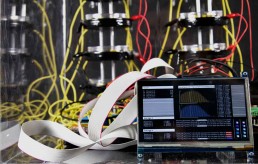
João Martinho Moura
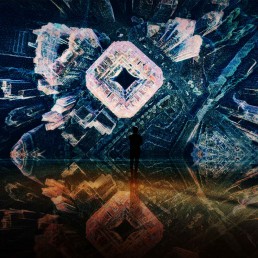
João Martinho Moura
Braga, Portugal
João Martinho Moura is a media artist and researcher born in Portugal, interested in electronic art and embodiment, virtual environments, computer music, and computational aesthetics. For the past 18 years, he has been adopting new ways to present the body and space in digital media. João Martinho Moura has a particular interest in art & science, perception, visualization, in the intersections between art and technology. Since the 2000s, His work has been presented internationally, several times, in more than 18 countries, some city-scale exhibitions. Author of various publications in the area of media arts, interfaces, embodiment, virtual reality, and visualization. As a media artist, he has collaborated in some international institutions such as ESA – European Space Agency, INL – International Iberian Nanotechnology Laboratory, NATO – North Atlantic Treaty Organization, UNESCO, and was selected artist at the European Commission’s STARTS and MindSpaces initiatives. In 2013, João Martinho Moura received the National Multimedia Art and Culture Award in Lisbon for his contribution in the area of digital arts in Portugal.
MindSpaces project
out > there
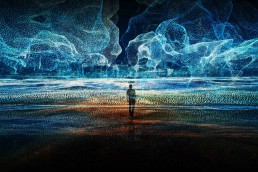
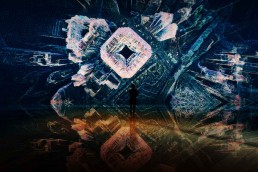
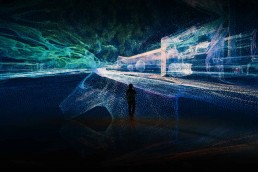
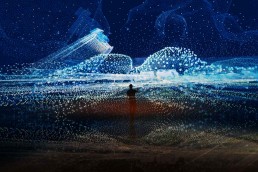
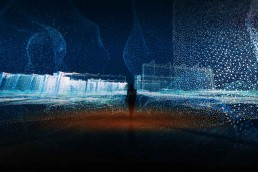
Emanuel Gollob
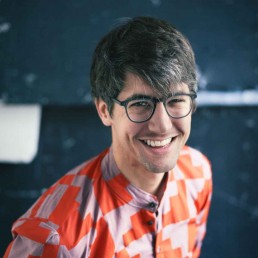
Emanuel Gollob
Vienna, Austria
Emanuel Gollob, born in 1991, is a freelance industrial designer based in Vienna. An important part of his work is the use of technical innovations, which are frequently repurposed and employed in an exciting way. He’s not interested in wholesale criticism or glorification of technical progress, seeing it as just a source of many-faceted tools for shaping our present and future. Working at the interface of art, technology, and society, his transdisciplinary activities provide insight into alternative scenarios of the present based on current innovations.
MindSpaces project
For my MindSpaces project, I am connecting to PUC 2 – Inspiring Workspaces. I am especially interested in VR spaces, which use GAN machine learning models to change their parametric aesthetic with the aim to support Non-Task brain activity. Various studies propose a connection between these brain activities and work-related processes regarding creativity, empathy and well-being.
My motivation for focusing on Non-Task brain activity in the workspace context grounds in my interest in understanding the influence of living in a digital culture on our attention and non-task modes, as well as understanding how brain processes might be shifting parallel to digitalization and how brain processes could be supported by external visual stimulation.
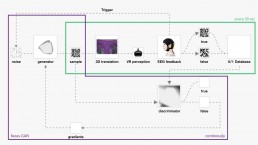
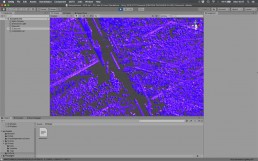
Emanuel Gollob Works
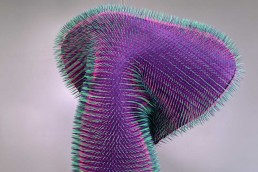
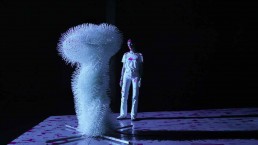
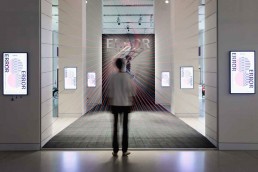
Sarah Derat
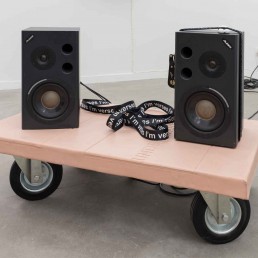
Sarah Derat
London, United Kingdom
Sarah Derat is a French artist, currently based in London, UK. Her practice is at the intersection of sculpture/installation and digital technology. For the past year and a half, Derat has been particularly interested in exploring the possible resonances that AI/automation have on language, cognition and society at large, via the prism of archeology and anthropology.
MindSpaces project
Sarah Derat Works
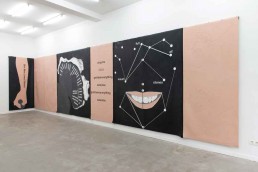
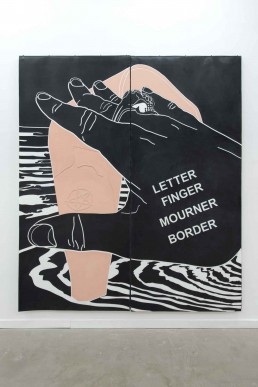
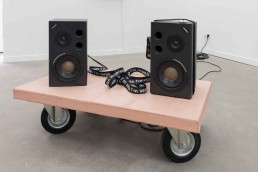
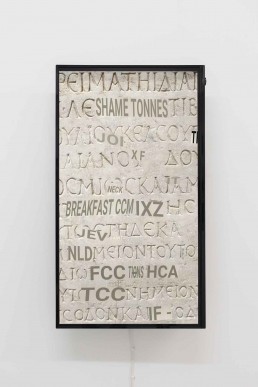
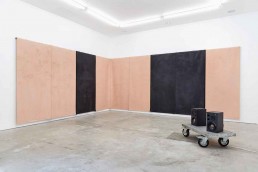
Haseeb Ahmed
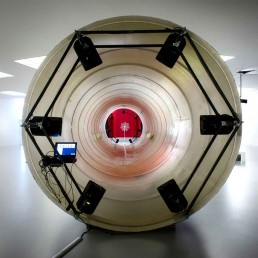
Haseeb Ahmed
Brussels, Belgium
HASEEB AHMED (b.1985) is a research-based artist. Originally from the US, he now lives and works in Brussels. He produces objects, site-specific installations, films, and writes for various publications. Often working collaboratively Haseeb integrates methodologies from the hard sciences into his art production. Currently he works with the von Karman Institute for Fluid Dynamics (VKI) in Brussels for his project, The Wind Egg Trilogy. The project blends art and aeronautics, myth and technology, to create new narratives for the present. Ahmed has been a lecturer at the Zurich University of the Arts, Royal Academy of the Art in The Hague, and Sint Lucas Antwerp School of Art and Design. Ahmed received his PhD in practice-based arts in at the University of Antwerp and Saint Lucas Antwerp School of Art and his Masters from the MIT Program in Art, Culture and Technology (2010). He has a Bachelor of Fine Arts at the School of the Art Institute of Chicago. Ahmed has been a resident at the Jan van Eyck Academie in Maastricht (NL) and the Skowhegan School of Sculpture and painting (US) among others. His work has been exhibited internationally including the Museum of Contemporary Art Chicago (US), The Gothenburg International Biennial of Contemporary Art (SE), the Museum Barengasse Zurich (CH), and De Appel in Amsterdam (NL). He is represented by Harlan Levey Projects in Brussels.
MindSpaces project
Pneuma In and Out
My project uses air as a medium to read the conditions of labor in a contemporary office space. As architecture is pushed towards sustainability it becomes less inhabitable. Energy consumption from heating/cooling air is reduced by sealed windows fitted with automated sun-blocking blinds. Using computational fluid dynamic simulations and working with Mindspaces partners I work to make both the invisible air and labor conditions visible at once. This project also explores the associations that the fluid medium of the air has with vitality, time, and creation across cultures historically with sculptural and virtual artworks.
Haseeb Ahmed Works
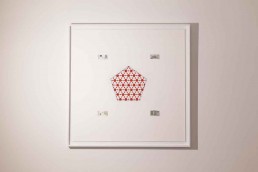
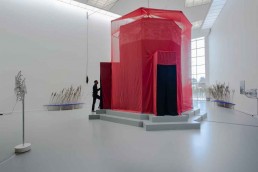
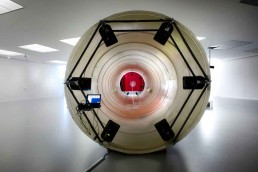
MindSpaces Residency Artists
MindSpaces Residency Artists
MindSpaces is a 3-year research project financed by the European Commission STARTS/Lighthouse projects started on Jan 1th 2019. To encourage collaboration of research projects and artists STARTS funds ‘STARTS residencies’ of artists in technology institutions and of scientists and technologists in studio of artists. In this project, artists, scientists, architects, engineers and technology experts closely collaborate under a novel working model scheme to propose innovative designs to address societal challenges faced by cities as they expand, and the evolving needs in functionality and emotional resonance of modern day workplace and housing interiors. Art has the capacity to transcend established theoretical and conceptual frames and act in cross-disciplinary ways, as it provides space for what is called as ‘lateral’ thinking, that is to address issues with an ‘out of the box’ approach.
MindSpaces selected 6 artists through a series of two open calls for artists. The selected MindSpaces artists in residence are presented below.

